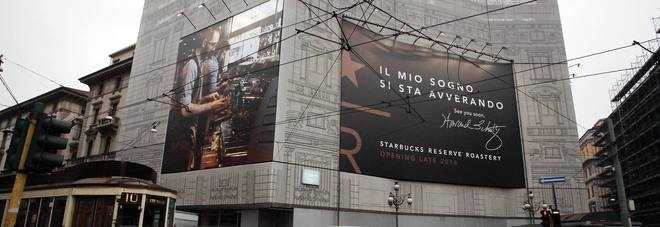MILAN – Italian consumers value their café culture. A recent report states that Italians drink approximately 600 cups of coffee a year and their consumption will continue to increase. Italy appears to be the perfect market for Starbucks to enter.
Italians consume 4.6% of the world’s supply of coffee. Coffee also dominates Italians preference for hot drinks and they prefer to drink it black. They are highly educated coffee drinkers and understand what high quality coffee truly is. (Giovanazzi)
Although this market appears to be attractive, Starbucks will face many obstacles and challenges with the Italian consumer. Italian consumers mainly drink “espresso” and an occasional cappuccino. However, Starbucks is known for offering many flavored milky drinks such as the Vanilla latte or the iced caramel Frappuccino.
The coffee market in Italy is already dominated by large manufacturers, such as Lavazza or Segafredo Zanetti, and Italians are loyal to their coffee brands. Starbucks will have to adapt extreme localization in order to persuade Italian consumers to enter their coffee shop.
Starbucks in other European countries are still lagging behind American and Asian stores. While Americans like to drink their vanilla latte on the go, French consumers prefer to sit and drink at the café with their friends.
Therefore, Starbucks had to invest a lot of capital into their French stores in order to create more space for seating. For example, in Paris, a Starbucks next to the Paris Opera has grand architecture, a sleek wood coffee bar and a stage for poetry readings.
Starbucks localized their stores in order to attract foreign and French consumers. However, not only Europeans are the same. Brits prefer to take their coffee on the go like Americans. (Alderman).
Therefore, Starbucks cannot generalize the “European consumer” and must adapt to each country. They should also adapt to each region within a country. For example, Bavaria is much different than the state of Brandenburg in Germany.
Localization is critical for Starbucks in Europe since many Europeans view Starbucks as another “evil American corporation” trying to take away business from local European coffee shops.
Starbuck’s CEO announced that Starbucks will open its first location in Italy in Milan late 2018. This Starbucks will be unique because it will be a Roastery.
According to NPR, visitors will be able to experience the entire coffee-making process and special drinks will be offered which cannot be found at a regular Starbucks. (Example: “Shakerato, an espresso shaken with ice and a dash of demerara syrup”)(Maffei).
The article continued to state that Starbucks will face fierce competition in Italy. There are about 149,300 coffee bars in Italy and there is about one coffee bar per 406 Italian citizens.
Starbucks will also have to lower its price.
At a local coffee house, one can order an espresso and a croissant under $3 dollars. While one drink at Starbucks is about $4.
Additionally, Italian perception of Starbucks is not positive. Cristian Marone, co-manager of Bar dei Bossi in Milan stated, “I’d be more wary of the Italian bars in my neighborhood than of Starbucks’ diluted coffee. If I ever went to Starbucks, I would feel like a number, not a customer. In our bar customer care is crucial.” (Maffei)
Can Starbucks be successful in the homeland of espresso? Although they are the largest coffee market in the world, it will be the most difficult market to enter due to Italian consumer behavior and fierce competition.
Starbucks should stay in large touristic cities in Italy since they can still attract tourists who are familiar with Starbucks and do not venture into smaller Italian coffee shops. Starbucks has already ventured into coffee culture cities such as Vienna.
However, Starbucks should not expand into smaller cities in Italy or Austria.
Italian consumers are educated about high quality coffee and already view Starbucks as “diluted American coffee.” Starbucks could focus on selling non-coffee products, such as pastries and sandwiches in order to generate revenue and be successful.
Sources:
Maffei, Lucia. “Starbucks To Open In Italy, Home Of Espresso, In 2018. Italian Cafes Say Bring It.” NPR. NPR, 28 Feb. 2017. Web. 17 Apr. 2017. <http://www.npr.org/sections/thesalt/2017/02/28/517783805/starbucks-to-open-in-italy-home-of-espresso-in-2018-italian-cafes-say-bring-it>.
Alderman, Liz. “In Europe, Starbucks Adjusts to a Cafe Culture.” The New York Times. The New York Times, 30 Mar. 2012. Web. 17 Apr. 2017. <http://www.nytimes.com/2012/03/31/business/starbucks-tailors-its-experience-to-fit-to-european-tastes.html>.
Giovanazzi, Silvia. “The Italian Cofee Market 2010.” (n.d.): n. pag. USDA Foreign Agricultural Service, 2010. Web. <https://gain.fas.usda.gov/Recent%20GAIN%20Publications/The%20Italian%20Coffee%20Market%202010_Rome_Italy_12-3-2010.pdf>
Nicole Friedrich
















